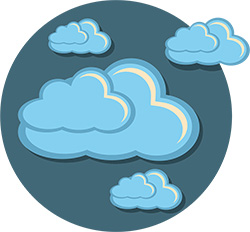For business leaders, the time is ripe to capitalize on emerging technologies and benefit from the age of digital transformation. The business transformation occurs in parallel to the advances in technology. A weather API, such as the one here, is one of the fastest-growing ways for companies to get weather data into their applications.
Many businesses are looking for ways to embrace modern technologies to continue to change the way they work and earn.
With numerous benefits and uses, it’s no surprise that more businesses are turning to weather APIs than ever before.
Here are the five reasons that you should be quick to embrace weather API for business and scale it to new heights.
An Integral Part of Digital Transformation (Weather API)
Table of Content hide
1 An Integral Part of Digital Transformation (Weather API)
1.1 Accessible on Diverse Platforms
1.2 Ability to Integrate Data With Other Applications
1.3 Access to Accurate, Frequently Updated Data (Weather API)
1.4 Launch a New Product and Enhance Existing Offerings
APIs (Application Programming Interfaces) are the foundation of digital transformation. Companies are leveraging the potential of APIs to reinvent their products, services, and business models.
Weather API empowers you to improve your existing product or create a new one that adds value for your customers.
For example, if you know that a storm is expected in a week’s time and would affect your operations in some way, you can leverage weather data from an API to make an informed decision about how your operations will continue despite that storm (or whether or not to cancel an event).
This is just one of the instances of how utilizing weather data via an API can prove vital to your business and help you make better decisions.
Accessible on Diverse Platforms
One reason businesses rapidly adopt weather APIs is that they can be accessed on diverse platforms.
You can use them in all deployment modes, such as cloud-based, on-premise, and hybrid APIs. The latter combines the benefits of both the former options and provides easy integration with prevailing systems.
Applications like Discord gives additional value to the users who are using Weather API and you can get discord tips to enhance communications.
Additionally, you can choose from open-source or commercial APIs. This means you can customize the solution based on your specific needs or one ready to use out of the box. The choice is completely yours.
Moreover, these APIs support many different types of platforms, such as mobile apps, web apps, and web APIs.
Ability to Integrate Data With Other Applications
Using weather APIs, developers can integrate weather data into their applications and create better experiences for users. The most common use case is adding weather data with other APIs like traffic and location.
For example, weather APIs can help you if it’s raining in your area and you need to drive somewhere.
But how? A traffic API would give you the essential information about the quickest route at that particular time of day.
By integrating these real-time insights into an app or website, Weather APIs can improve our lives by providing pragmatic advice based on real-world conditions.
A similar use case would involve integrating weather data with a text messaging service so that when rain hits tomorrow morning before work starts up, you can prepare before leaving home.
Access to Accurate, Frequently Updated Data (Weather API)
Typically, a weather API gets updated every 6-12 hours, making it highly accurate. However, some APIs are updated more frequently than others, and some are less accurate.
So, when you’re looking at different weather APIs, don’t forget to check when they update their information and how often.
If a weather API only updates once a day or even twice or three times a month, then there is the possibility of inaccurate data that you may need for your app project.
So, make sure you select a reliable API provider that offers accurate data to use in your app development project.
Launch a New Product and Enhance Existing Offerings
Weather APIs can help you quickly launch a new product or inject more value into your current solutions.
- New products – With weather APIs, you can create new products like wearables and home automation devices that automatically adjust to the weather.
- Add value to existing products – Almost every business is leveraging weather information to improve their current offerings, such as offering more accurate estimates for shipping and billing customers or providing better recommendations when selling insurance policies.
- Launch new services – You can launch a service or platform that utilizes weather data in innovative ways. This way, you can help others make informed decisions based on real-time forecasts and historical data.
Summing Up
If you are still doubtful about using APIs, I hope this article has at least helped you understand why more and more companies are adopting them — and why you should too.
Weather APIs are a great way to innovate new products and enhance your current solutions. Moreover, they are a great tool for insurance companies as they provide accurate and real-time weather analysis.
The weather impacts almost every aspect of our lives—but it’s not just about temperature anymore.
Weather APIs can be used by anyone who wants to forecast what will happen with their business or job based on current conditions and forecasts for the future.
